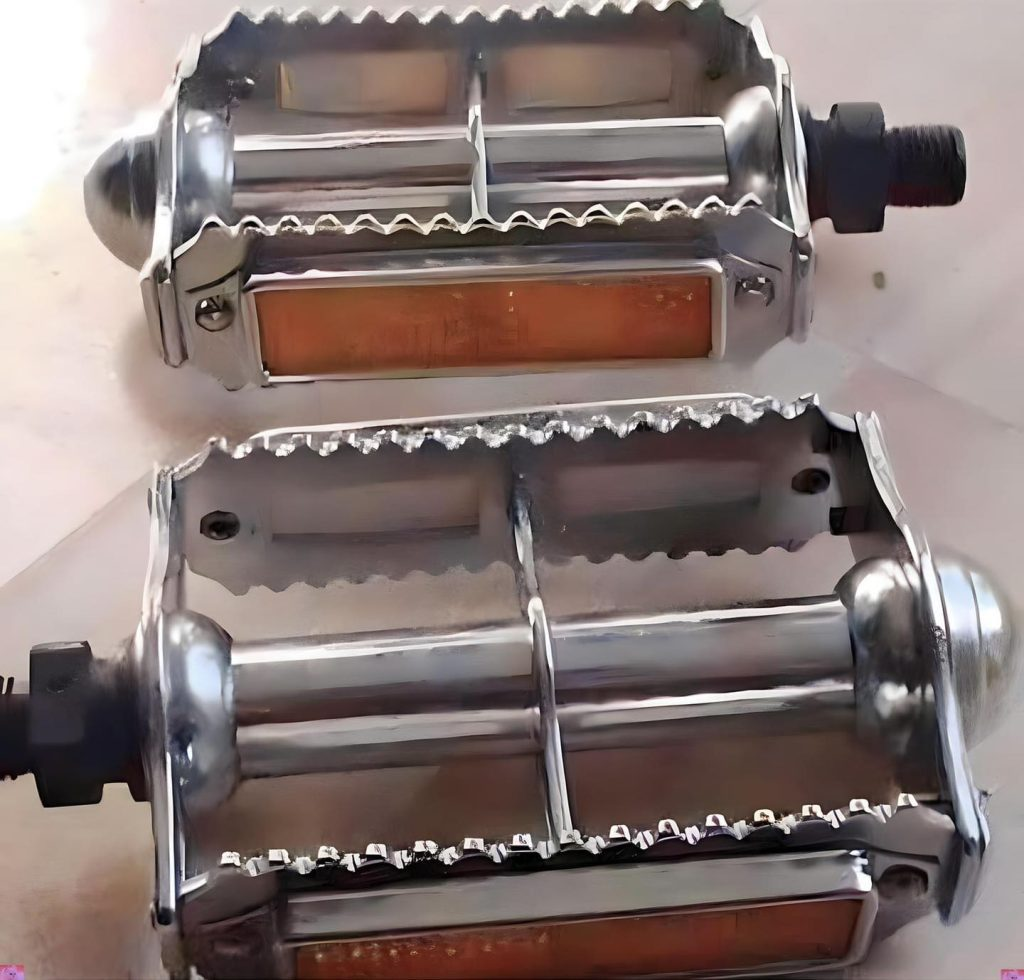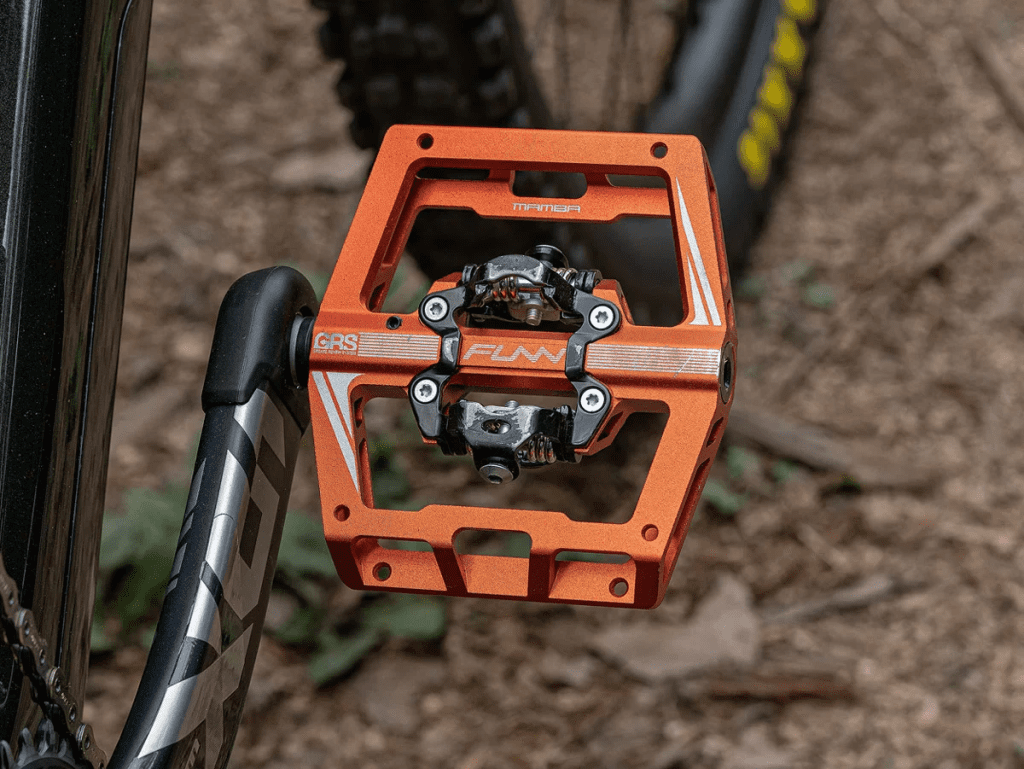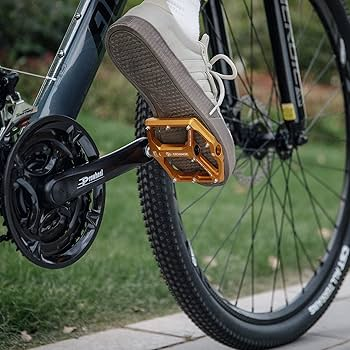Bicycle pedals are one of the most critical components of your cycling experience. Acting as the connection between your feet and the bike, they directly influence comfort, efficiency, and safety. Whether you’re a weekend cruiser or a competitive racer, understanding the different types of pedals and their features can significantly enhance your performance and enjoyment. This guide breaks down everything you need to know about bicycle pedals.
What Are Bicycle Pedals and Why Are They Important?

Bicycle pedals are the platforms that transfer your leg power to the drivetrain, propelling the bike forward. Each pedal consists of two main parts:
- Spindle: This threads into the crank arm and serves as the axle for rotation.
- Body: The surface where your foot rests, often equipped with bearings for smooth movement.
Modern pedal designs cater to various cycling styles, offering options for casual riders, mountain bikers, and professional road cyclists alike. Choosing the right pedal can significantly affect how efficiently and comfortably you ride.
Types of Bicycle Pedals
Pedals come in various designs to suit different riding styles. Here’s a closer look at the main types:
Flat or Platform Pedals
Flat pedals, also known as platform pedals, are simple and versatile.
- Features:
- A broad, flat surface for foot placement.
- Suitable for use with regular footwear.
- Ideal For:
- Casual cycling.
- Mountain biking.
- BMX riding.
- Variations:
- Basic models are made from plastic or aluminum.
- High-end versions include replaceable metal pins for improved grip.
Flat pedals are beginner-friendly and allow easy foot placement and removal, making them ideal for riders prioritizing convenience.
Quill Pedals
Quill pedals are a classic option, primarily seen on vintage or traditional road bikes.
- Design:
- Feature a slim body with a parallel cage for foot support.
- Often paired with toe clips and straps for added stability.
- Enhancements:
- Toe clips and straps secure the foot for better pedaling efficiency.
- Cleats can be added for a semi-clipless experience.
While they offer nostalgia and functionality, quill pedals have largely been replaced by modern clipless systems due to improved safety and ease of use.
Clipless Pedals
Despite the name, clipless pedals involve “clipping in” using special cleats on cycling shoes.
- How They Work:
- Cleats attach to the shoe and lock into the pedal mechanism.
- A quick outward twist of the heel releases the connection.
- Advantages:
- Superior power transfer.
- Enhanced control on technical terrains.
- Reduced foot slippage in wet or muddy conditions.
- Popular Systems:
- Shimano SPD and Look pedals dominate the market, offering customizable float and tension.
Clipless pedals are a favorite among road cyclists and mountain bikers seeking efficiency and a secure connection. However, they require specific shoes and a period of adjustment for new users.
Flat Pedals vs. Clipless Pedals: Which Is Better?
The debate between flat and clipless pedals often boils down to personal preference and riding style. Here’s a quick comparison:
- Flat Pedals:
- Easy to use with any shoe type.
- Allow quick foot removal, ideal for beginners and technical mountain biking.
- Offer less efficient power transfer compared to clipless pedals.
- Clipless Pedals:
- Provide a locked-in feel for better energy transfer.
- Ideal for high-performance cycling, including road racing and mountain biking.
- Require special shoes and may have a steeper learning curve.
Ultimately, the best choice depends on your cycling goals and comfort level.
Choosing the Right Pedals for Your Riding Style

Selecting the perfect pedals involves assessing your needs and riding habits. Here’s how to decide:
- For Casual Riders:
- Stick with flat pedals for versatility and ease of use.
- For Mountain Bikers:
- Choose high-end flat pedals with traction pins or clipless pedals with robust cleats for challenging terrains.
- For Road Cyclists:
- Opt for lightweight clipless pedals designed for maximum power efficiency during long rides.
- For BMX Riders:
- Durable flat pedals with excellent grip are ideal for performing tricks and stunts.
Caring for Your Bicycle Pedals
Regular maintenance ensures your pedals perform smoothly and last longer. Here’s a quick checklist:
- Clean After Rides: Remove dirt, especially after muddy or wet rides.
- Inspect Bearings: Check for wear and replace as needed to maintain smooth rotation.
- Tighten Connections: Ensure pedals are securely attached to the crank arms to avoid wobbling or accidental detachment.
- Replace Worn Parts: For high-end pedals, replace traction pins or cleats when they show signs of wear.
Proper care not only prolongs the life of your pedals but also ensures a safer and more enjoyable ride.
The Evolution of Pedal Technology

Bicycle pedals have undergone a remarkable transformation over the years. From simple wooden designs attached directly to the wheel to today’s advanced systems featuring lightweight materials and precision engineering, the evolution reflects the growing demands of cyclists.
- Flat Pedals: Early flat pedals provided a basic platform for foot placement, later incorporating materials like aluminum and nylon for durability.
- Quill Pedals: Gained popularity in the mid-20th century with toe clips and straps for added efficiency.
- Clipless Pedals: Introduced in the 1980s, inspired by ski bindings, these pedals revolutionized cycling with their secure and efficient design.
Modern pedals continue to innovate, with manufacturers focusing on weight reduction, improved grip, and better adjustability to meet the needs of diverse riders.
Conclusion
Bicycle pedals may seem like a small component, but they are crucial to your cycling performance and comfort. Understanding the different types of pedals and how they align with your riding style can make a world of difference. Whether you’re a casual cyclist enjoying leisurely rides or a professional tackling challenging terrains, the right pedal choice can enhance your experience.
By selecting, maintaining, and using your pedals effectively, you ensure every ride is efficient, comfortable, and safe. So, take the time to assess your needs, invest in the right pedals, and enjoy the ride—one pedal stroke at a time.


